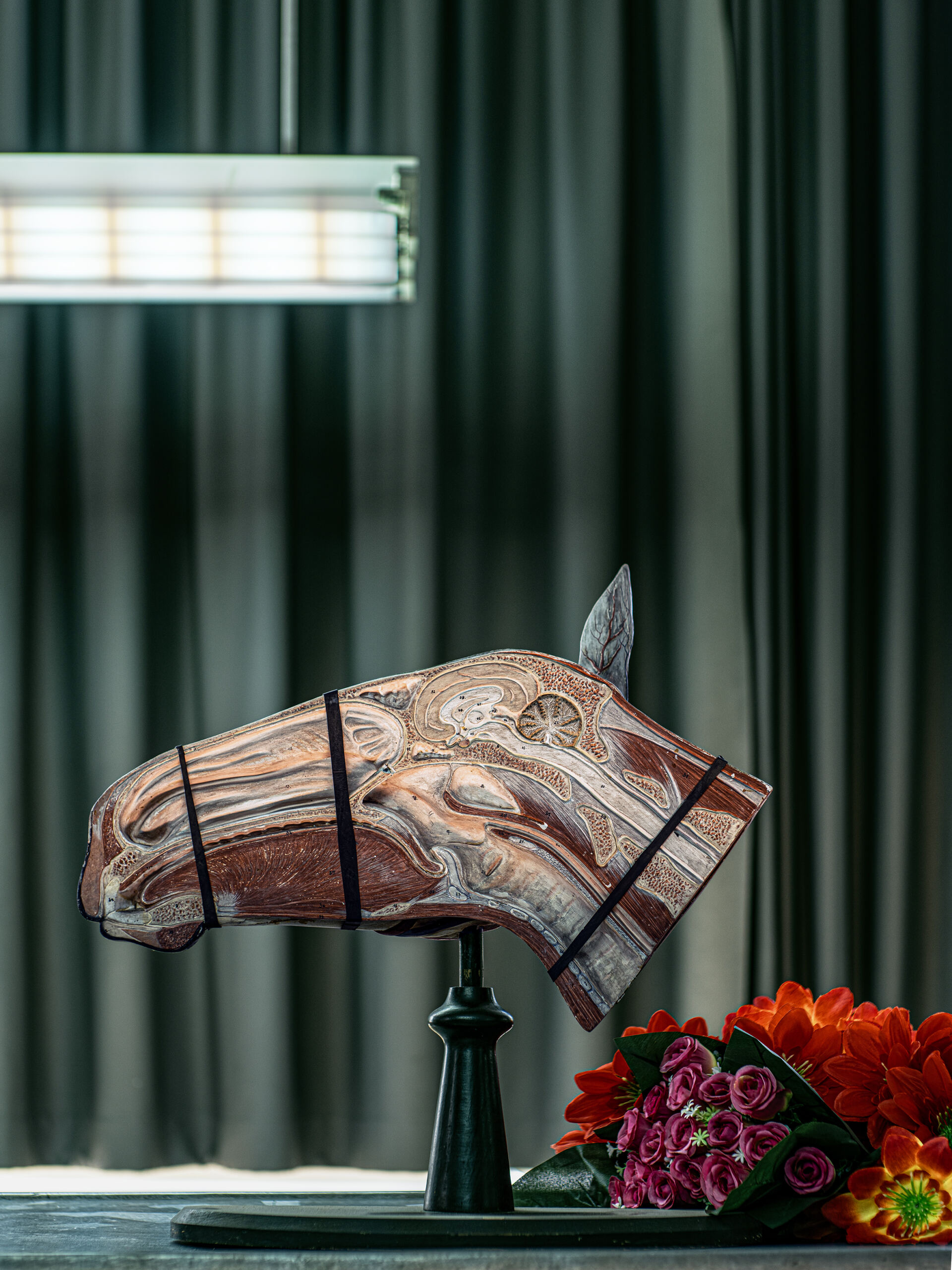
In Aleksandar Kostić’s body of work, as well as in the life of the contemporary human, animals are absent. In his latest series, Nonhuman, we see various interventions, multifaceted transpositions, and traces of their existence, yet there are no real beings. There is no human either, but their presence is more than evident. The human observes, collects, studies, classifies, conserves, preserves, represents, and educates other people/observers about this other half of their world – the world of animals – which, the more we know about it, becomes increasingly distant. John Berger accurately noted in his essay Why Look at Animals that “the nineteenth century, in Western Europe and North America, saw the beginning of a process, today being completed by 20th century corporate capitalism, by which every tradition which has previously mediated between man and nature was broken. Before this rupture, animals constituted the first circle of what surrounded man… They were with man at the centre of his world.” Today, animals in the human world are most often “present” as pets of a limited number of species or as products for mass consumption (children’s toys, books, movies, games, food industry) or as actors in spectacles (circuses, fairs, zoos).
The author’s personal maturity has certainly contributed to his questioning of this multidimensional and altered relationship between modern humans and animals and to his exploration of it today in a cognitive, emotional, and intuitive manner, while also reassessing his own photographic method.
———————————
Aleksandar Kostić is a photographer and cinematographer. He graduated from the Faculty of Dramatic Arts in Belgrade, Film and Television Camera Department. He teaches at the same faculty, as a full professor, at the Camera Department. His artistic work encompasses various forms of photographic and cinematographic expression. As an author, he has received awards both national and international.
Gratitude for participation and support on the project:
Collaborators: Dragomir Nikolić, Vuk Popić (Natural History Museum), Željko Rudić; Natural History Museum in Belgrade, Director MSc Slavko Spasić and the engaged curators, Faculty of Veterinary Medicine in Belgrade, Prof. Dr. Milena Đorđević, Igor Vranjković and Cineplanet company, Epson company, Milan Tvrdišić, Dragan Pavlović, Dragana Zaouris, and The Attica Zoological Park, Milica Čubrilović, Kristijan Ovarij, and Beo Zoo Garden, Jelena Manojlović, and the Faculty of Pharmacy, Prof. Dr. Bojan Stojnić, Prof. Dr. Slobodan Nikolić.
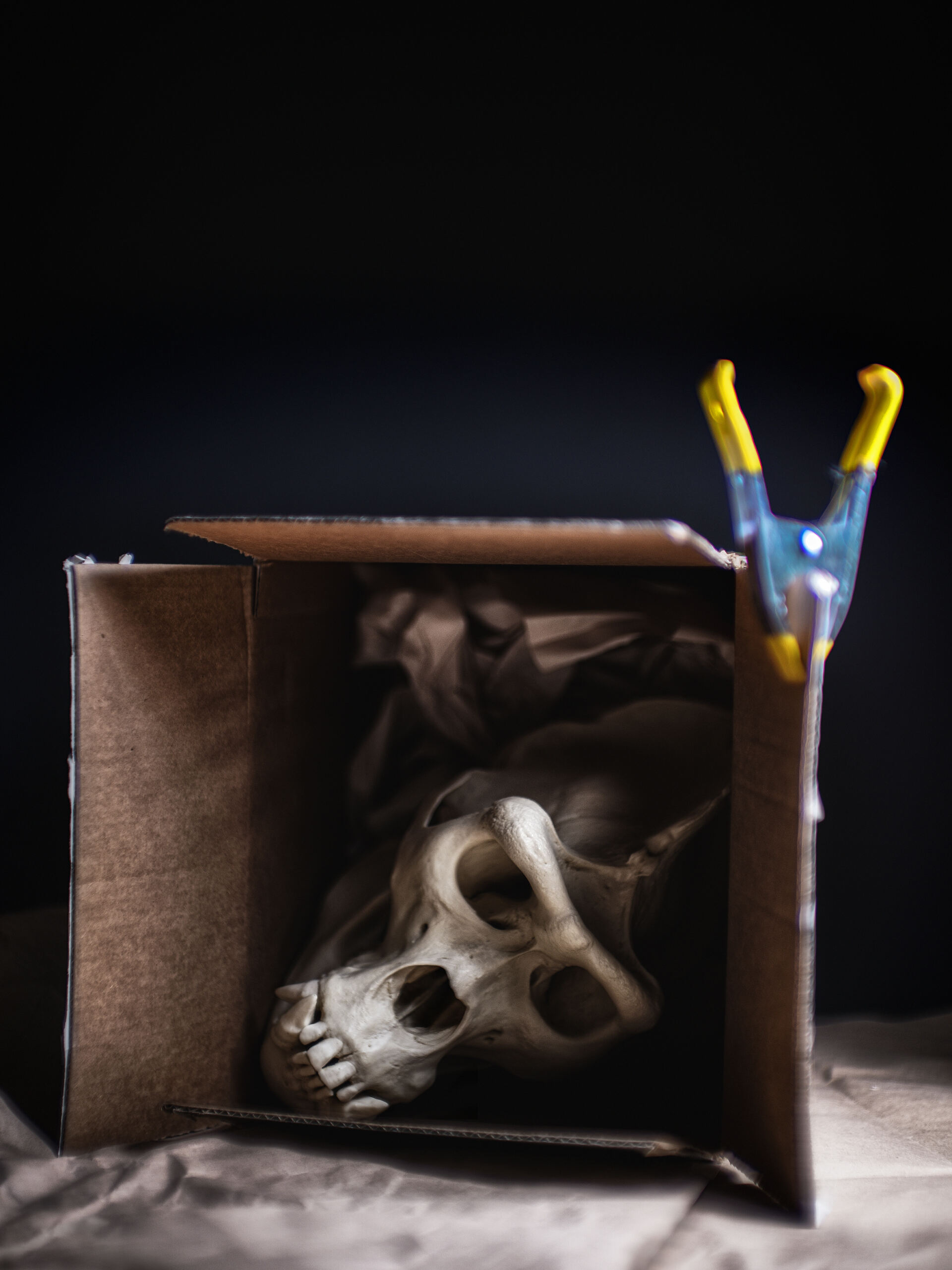
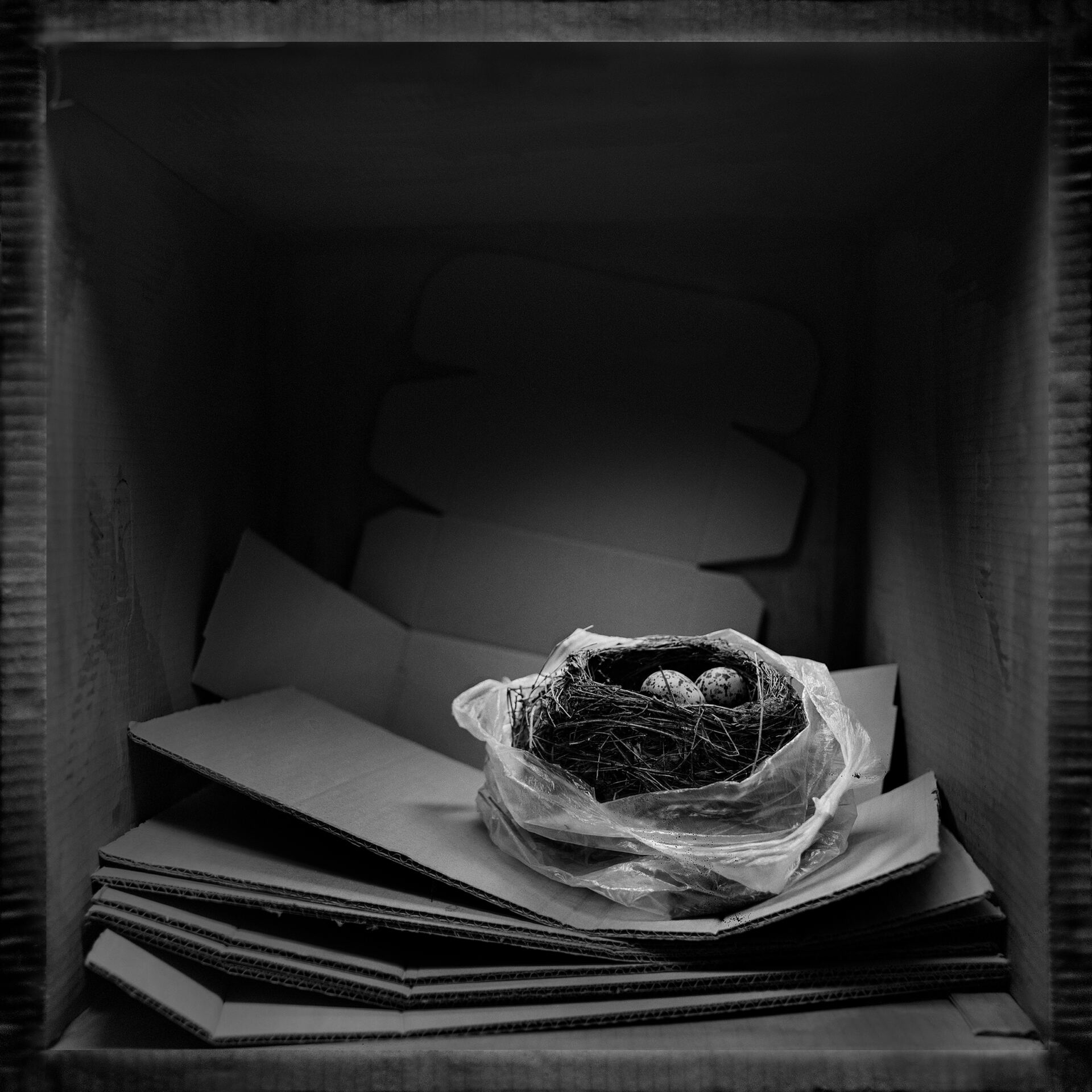
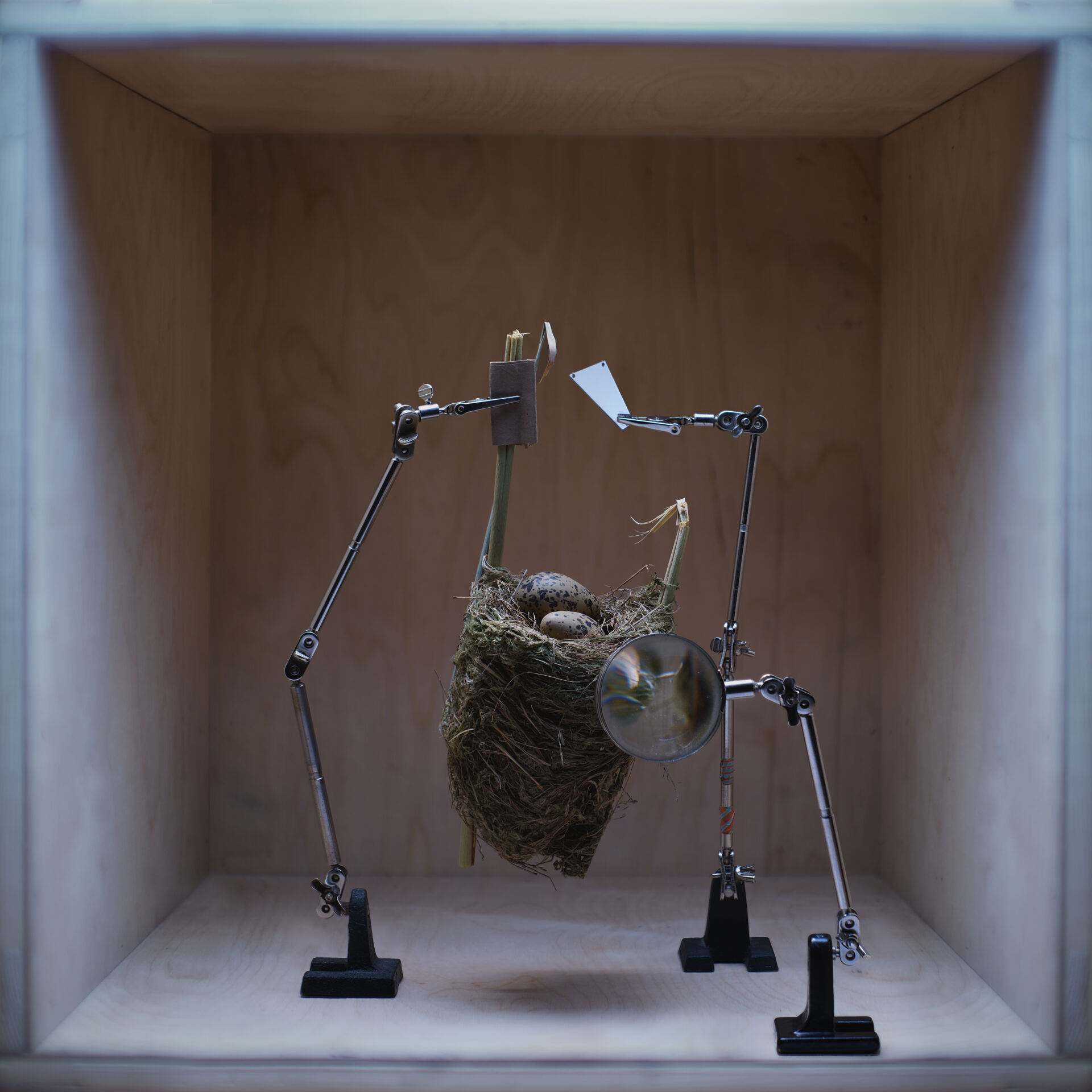

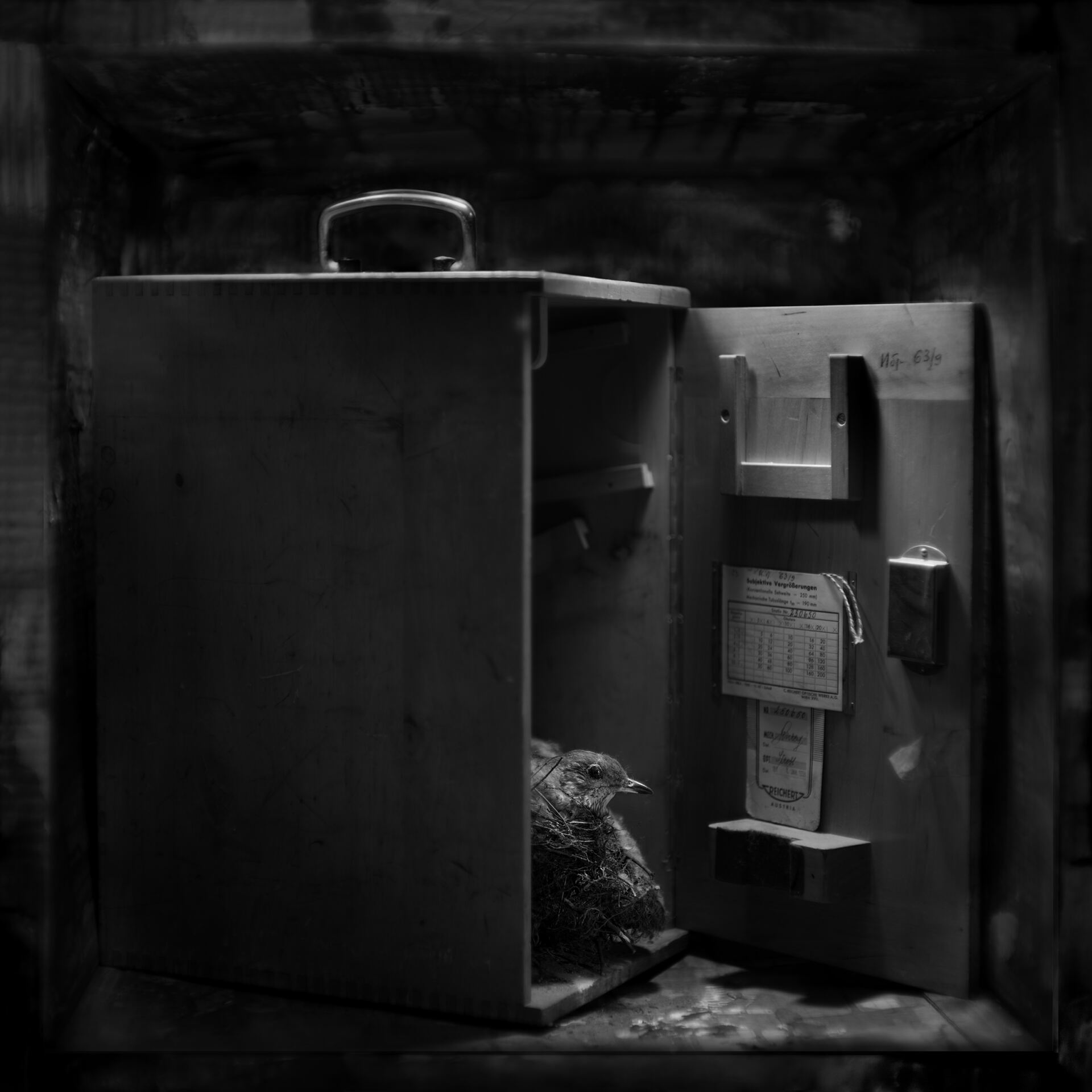
The Other Half of the Human World
All of Kostić’s photographs are staged, whether they represent documentary material of museum exhibits or create overly stylized scenes, close to advertisements, with real exhibits as their starting points. In a simulated natural setting of a magpie’s nest with intense orange-yellow lighting, for example, there are jewellery and other artificial odds and ends, garbage-like, but there is also a hint of new life. Many works are inspired by narratives of stories, fables, fairy tales, and myths. Symbolic representation in some is based on clichés derived from myths or legends and reflects the actual appearance in nature or behaviour of some animal (a cuckoo laying an egg in other’s nest), while others are imagined and false.
The entire Nonhuman exhibition/project exudes the author’s ambivalent feelings, from nostalgia for “former worlds” to a yearning to preserve them, bring them closer to an unfamiliar gaze, or even to caricature them so that we might once again question the disrupted circle of coexistence between humans and animals.
To achieve this electrified and mysterious convergence, professional film cameraman and photographer Alexander Kostić employs special tools, traditional analogue photography with conventional cameras, and composite images with digital cameras and lenses of special capabilities. By revealing the minutest details in all parts of his work (butterflies, nests, skeletons, educational tools), the question seems to hover over the whole: Will we ever again experience a live, non-lethargic reciprocal gaze of an animal, or will it be directed at us only from the paradisiacal garden of artificial intelligence where they are once again prisoners of a new human/social situation?
Vesna Danilović